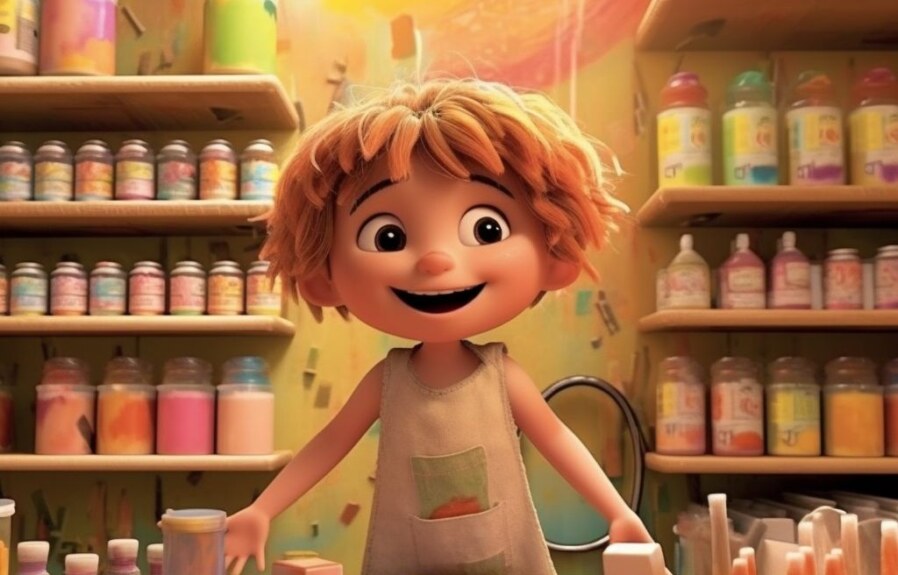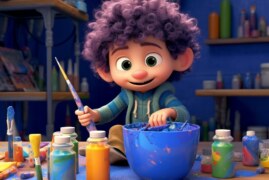As a seasoned expert in art and design, I have often been asked about the elusive peach color. While it may seem like an easy color to replicate, getting the right shade of warm and delicate peach can be a daunting task. In this article, I will guide you through the process of making peach color from scratch using different mediums, including paint, fabric dye, and digital software. Whether you’re an aspiring artist or a seasoned designer, mastering the art of peach color can help elevate your creations and add a touch of elegance and sophistication to your work. So let’s dive in and discover the secrets to achieving beautiful peach hues!
1. Understanding Color Theory: Mixing Peach Color
How To Make Peach Color: Understanding Color Theory
Peach color is one of the most popular shades in the world of art and design due to its warm and inviting nature. It is a delicate color that can instantly brighten up an image or design. However, creating the perfect shade of peach can be a bit tricky if you do not understand the basics of color theory.
Primary Colors for Making Peach Color
In color theory, primary colors are the colors that cannot be created by mixing other colors. The three primary colors are red, blue, and yellow. To create a beautiful peach color, you will need to mix two primary colors together in equal amounts.
You can mix equal amounts of red and yellow to make a bright peach color or mix equal amounts of yellow and blue to create a softer peach shade. It is important to note that the type of paint you are using can also affect the end result. For example, oil paints tend to have more vibrant colors, while watercolors tend to produce softer blends.
Secondary Colors for Mixing Peach Color
If you do not have access to primary colors, you can also create peach color using secondary colors, which are colors created by mixing two primary colors in equal amounts. To make peach color using secondary colors, you will need orange and pink paints.
Mixing orange and pink in equal amounts will create a bright and bold peach color. You can also experiment with using different proportions of orange and pink to create variations of peach color that suit your taste.
In conclusion, understanding color theory is crucial for creating the perfect shade of peach color. By understanding the primary and secondary colors and how they interact with each other, you can create beautiful peach tones that will enhance your artwork and designs.
2. Identifying the Primary Colors for Making Peach Color
Before attempting to mix peach color, it is essential to understand the basics of color theory. Colors can be classified as primary, secondary or tertiary based on their position in the color wheel. Primary colors are considered the building blocks of all other hues and cannot be made by mixing other colors. These are red, yellow and blue.
To make peach color, you need to identify the primary colors that can be mixed to create this hue. Peach is considered a light and warm color, and it can be created by mixing different combinations of primary colors with varying amounts. The primary colors that can be used to create peach color are red and yellow.
When mixing these primary colors, you should remember that the color of the final mixture will depend on the ratio of the colors used. More yellow will make a lighter shade of peach, while more red will make a darker shade. Adding white to the final mixture will lighten the peach shade even more.
Mixing primary colors can be a bit tricky, and it may require some experimentation before you get the perfect shade of peach. However, with practice, you can quickly master this skill and create beautiful peach shades that can add warmth and charm to your art and design projects.
3. How to Mix Variations of Peach Color Using Secondary Colors
When it comes to mixing variations of peach color, secondary colors are your best bet. Secondary colors are created by mixing two primary colors together. The primary colors which typically make up a peach color are yellow and red, which can then be mixed with other secondary colors to create unique peach tones.
If you’re mixing peach color with secondary colors, orange and green are the go-to options. To create a lighter shade of peach, mix yellow and orange together. On the other hand, to create a darker shade of peach, mix red and green.
It’s important to note that the amount of each secondary color you use will determine the depth and intensity of the peach color you end up with. For instance, using more yellow than orange while mixing the two can result in a pale peach color, while using more orange can make it brighter and closer to a coral tone. This means that it’s necessary to experiment with different ratios of secondary colors to achieve the perfect peach shade for your project.
4. Creating the Perfect Shade of Peach with Complementary Colors
Using complementary colors can create a perfect and unique shade of peach. Complementary colors are colors found opposite each other on the color wheel. When mixed together, they create a rich and vibrant hue. In the case of peach, the complementary color is blue.
Mixing Peach with Blue
To create a peach shade using blue as a complementary color, you’ll need to start with the primary color red. Begin by mixing a small amount of red paint with a larger amount of white. Slowly add blue paint until you get the desired shade. The blue will reduce the saturation of the red and create a muted, pastel peach color.
Making Peach Pop with Complementary Colors
If you want a more vibrant peach shade, you can use complementary colors in a different way. Instead of muting the red with blue, pair it with a complementary color that is closer to yellow, such as green. Mix equal parts of red and yellow paint to create a bright orange shade. Then, add a small amount of green to the mix to create a unique and dynamic peach color.
When using complementary colors to create a perfect peach shade, remember to experiment and adjust the amounts of each color until you get your desired hue. Don’t be afraid to mix different combinations of colors to find the perfect shade that will complement your artwork or design.
5. Experimenting with Different Peach Tones Using Tertiary Colors
If you’re looking to expand your skillset in color mixing, experimenting with tertiary colors is the perfect place to start. Tertiary colors are created by mixing a primary color with its adjacent secondary color on the color wheel. When it comes to creating peach tones, adding a tertiary color can make all the difference in achieving the perfect shade.
To create a light peach tone, mix equal parts of yellow and orange, then add a touch of white to lighten the color. If you want a deeper shade of peach, mix red, orange, and yellow in equal parts. Adding a small amount of blue to this mix can create a muted, earthy peach tone.
It’s worth noting that the amount of each color you add will impact the final result, so it’s always a good idea to experiment with different ratios until you find the peach tone that suits your project best. Another option is to add small amounts of complementary colors to contrast and heighten the peach hue, such as blue or green.
Overall, experimenting with tertiary colors is a great way to add depth and dimension to your art and design work. The possibilities with peach tones are endless, so don’t be afraid to try out different color combinations until you achieve the perfect shade.
People Also Ask
What colors make peach?
Peach color is made by mixing pink, orange, and yellow paint together. Start by mixing equal parts of red and yellow paint to make orange, then add a few drops of pink until you reach the desired peach shade.
What two colors make peach?
Mixing equal parts of pink and orange paint together can create a peach tone. You can also add a few drops of yellow to create a warmer, more vibrant peach color.
What colors make light peach?
To create a light peach color, mix together one part red with one part orange, and a small amount of yellow. Keep adding a small amount of white paint until the desired lightness is achieved.
How do you make a peach color with food coloring?
To create a peach color with food coloring, mix equal parts of red and yellow food coloring together. Add a small drop of orange food coloring if necessary to achieve the desired shade.
Can you create peach color with watercolors?
Yes, it is possible to create a peach color with watercolors. Mix together red and yellow watercolor paints, and add a tiny bit of pink or orange paint to adjust the tone as needed.
Conclusion
In conclusion, peach color can be created by mixing different proportions of pink, orange, and yellow paint or food coloring together. By experimenting with different shades and tones, you can create the perfect peach color for your project.



